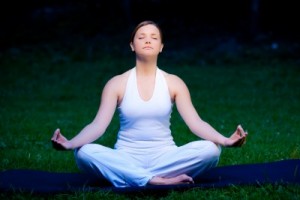 Linda Wasmer Andrew in her book titled Meditation debunks several myths regarding meditation. The myths include the following: “you have to be a little flaky to meditate” or meditation is about perfect silence. You have to be a religious person to meditate or “adults are the only ones faced with real stress”.
Linda Wasmer Andrew in her book titled Meditation debunks several myths regarding meditation. The myths include the following: “you have to be a little flaky to meditate” or meditation is about perfect silence. You have to be a religious person to meditate or “adults are the only ones faced with real stress”.
Andrews ultimately encourages anyone of any background to consider meditation as a “secret to success”. What is important while meditating is quieting the mind, relaxing and coming to focus on whatever one is doing.
As it turns out, the body cannot tell the difference between stressors and reacts in the same way physiologically to being chased by a tiger as it does to a demanding math teacher-it goes into the same state of high alert.
The research of Hans Selye demonstrated that “stress can make you sick” and Walter Cannon’s work described the fight-or-flight response, “the body’s automatic reaction to any threat- real or imagined, physical or emotional. It is this response that gives stress power to help or harm”. Since we know how stress can make us sick, it is important to not let stress overload the body. In order to undo stress, it is important to relax.
When one practices meditation, the body can experience the relaxation is needs. The idea is that you get so wrapped up in what you’re doing that you lose yourself completely in the activity. You feel thrilled just to be doing whatever it is you are doing, whether it’s running a race, writing a story, painting a picture or simply gazing at a sunset. In this state, the body experiences a decrease in metabolism, breathing rate, and heart rate as well as an increase in soothing alpha brain waves, decreased anxiety and tension, and improved sleep.
Breath slowly and naturally. Sit in a comfortable position. You can also lie down, but remember that the goal is to meditate not sleep. Close your eyes, if you wish. Try to relax your muscles in turn, moving from your feet to your head. If you have a lot of trouble sitting quietly, a rhythmic activity, like a slow flowing yoga posture, that lets you move around is another option.
Practice every day if you can. Start out meditating for ten minutes or less and as it becomes easier, extend that time. Do not get too wrapped up in meeting a time goal. The wonderful thing about meditation is that you can simply accept it as it comes.
Like any new skill, calling up the relaxation response will take some practice. With a little time and effort, however almost anyone can learn to do it.
Image: Copyright (c) 123RF Stock Photos
